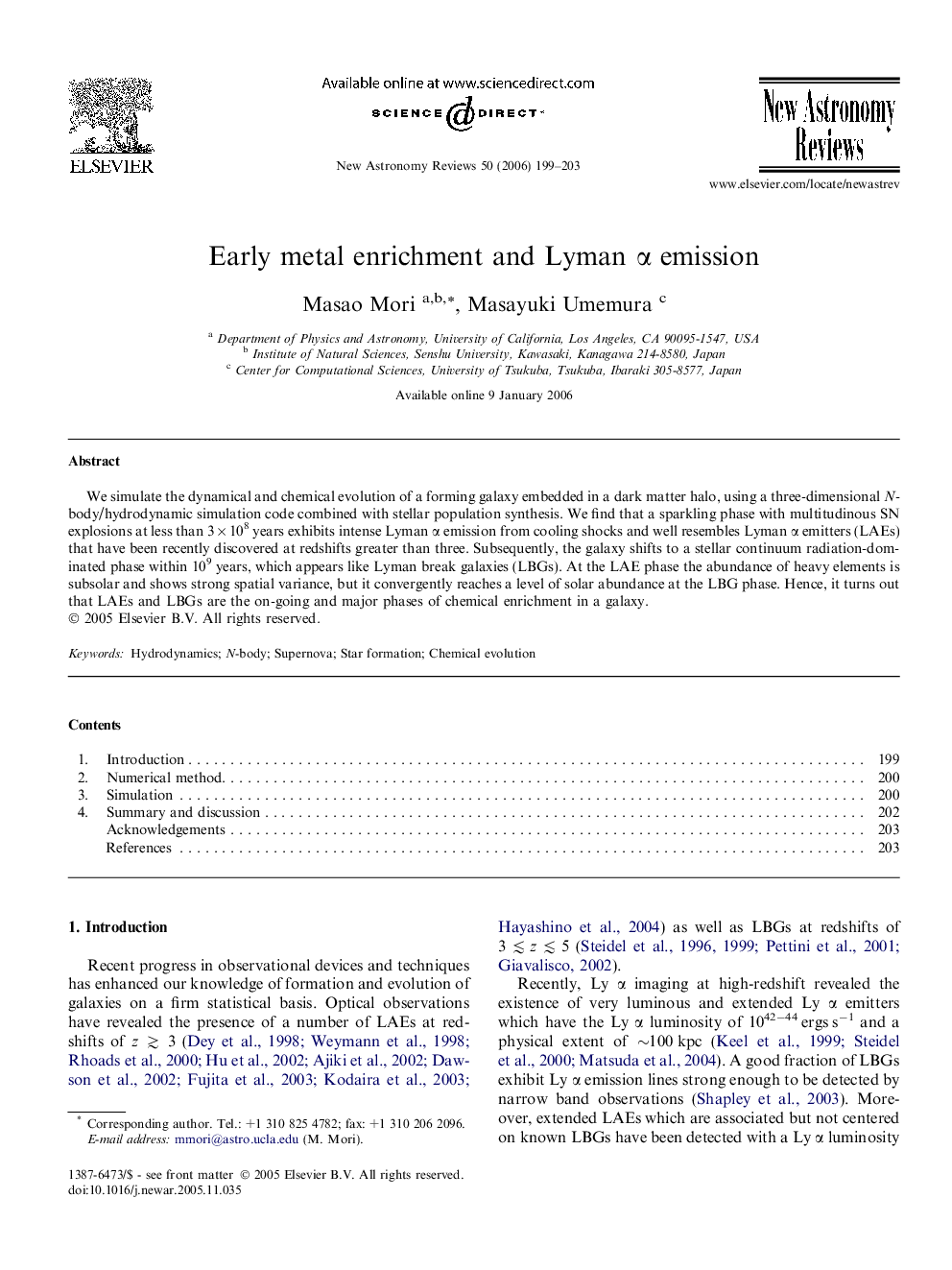| Article ID | Journal | Published Year | Pages | File Type |
|---|---|---|---|---|
| 1780431 | New Astronomy Reviews | 2006 | 5 Pages |
We simulate the dynamical and chemical evolution of a forming galaxy embedded in a dark matter halo, using a three-dimensional N-body/hydrodynamic simulation code combined with stellar population synthesis. We find that a sparkling phase with multitudinous SN explosions at less than 3 × 108 years exhibits intense Lyman α emission from cooling shocks and well resembles Lyman α emitters (LAEs) that have been recently discovered at redshifts greater than three. Subsequently, the galaxy shifts to a stellar continuum radiation-dominated phase within 109 years, which appears like Lyman break galaxies (LBGs). At the LAE phase the abundance of heavy elements is subsolar and shows strong spatial variance, but it convergently reaches a level of solar abundance at the LBG phase. Hence, it turns out that LAEs and LBGs are the on-going and major phases of chemical enrichment in a galaxy.
